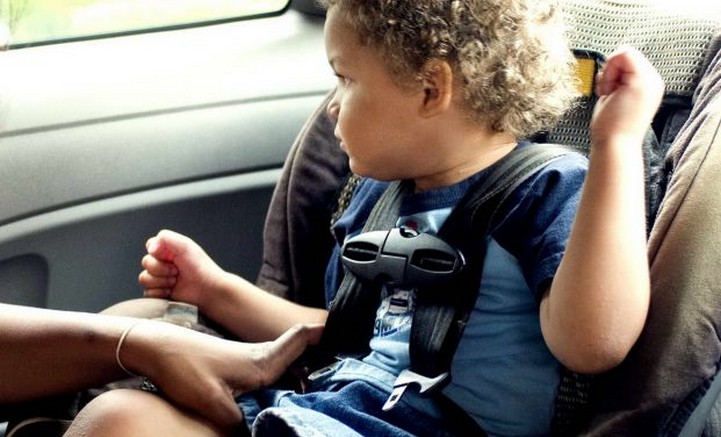
Transporting young children safely is an important issue both for parents and for child care providers. If you are a child care provider transporting children, it is your responsibility to work with the parents to ensure that children ride in safe, approved and properly installed child safety seats.
Each state has specific laws regarding child passenger safety. Check with your specific state to see what the law requires. The National Highway Traffic Safety Administration (NHTSA) has developed recommendations for transporting children safely that are stricter than most state laws. NHTSA’s recommendations are considered the safest ways to transport children, based on passenger safety research. Here are some of the current recommendations. (For more information, see the NHTSA website.)
Rear-Facing Infant Seat
The American Academy of Pediatrics strongly recommends that infants ride in rear-facing child safety seats until they have reached at least 2 years of age. There are two types of rear-facing seats: infant-only seats, many of which attach to a base; and convertible seats that can be turned forward-facing when the child is large enough. Infants are safest in the rear-facing position, so keep convertible seats rear-facing as long as they are within the weight guidelines of the specific seat. Most infants will need to move to a rear-facing convertible seat once they outgrow their infant-only seat.
Premature infants also need to ride in rear-facing seats. Some convertible seats may be too large to hold very small babies securely. An infant-only seat may provide a better fit. Make sure the baby’s head does not fall forward and cut off her breathing. Some low-birth weight infants may need an approved infant car bed that will allow them to lie flat until they have grown enough for a rear-facing seat. See the American Academy of Pediatrics Car Safety Seat Guide for more on protecting low-birth weight babies.
Forward-Facing Seat
Once children outgrow their rear-facing convertible seats, they can ride in forward-facing child safety seats. Forward-facing safety seats have a five-point harness that holds the child into the seat. Children should stay in forward-facing seats until they reach the upper weight limit of the seat— between 40 and 100 pounds, depending on the seat — or until the tops of their ears are above the top of the seat shell. Many companies are making forward-facing seats with higher backs and higher weight limits.
Belt-Positioning Booster Seat
Once children have outgrown a forward-facing seat, they will need a booster seat until they are 4 feet 9 inches tall and weigh 80 pounds. Booster seats position children so that the lap and shoulder belt fit properly. Booster seats may be backless or high-backed. Backless boosters are appropriate when the car has a high seat back or a head rest to protect the child’s head. If the seat back is low, children are safer in a high-backed booster that protects their head. Many states now have booster seat requirements for children.
Lap and Shoulder Belt
Children are ready to ride in a lap and shoulder belt when they can sit with their back straight against the seat back, their knees bend at the edge of the seat and the shoulder belt crosses their shoulder and does not cut into the neck or throat. The lap portion of the belt should lie across their hips, not their stomach or abdomen. Children and adults riding in a seat belt should always use both the lap and shoulder belt. Never allow children to place the shoulder belt under the arm or behind the back. The lap belt alone does not protect the upper body during a crash.
Installing Safety Seats Correctly
NHSTA recommends that all children under age 13 ride in the back seat. All safety seats should be installed in the back seat. The large majority of child safety seats are installed incorrectly. Be sure to read the instructions with the safety seat and the vehicle’s owner manual to install the seat correctly. Most newer vehicles and seats come with LATCH attachments that simplify installation. If you don’t have LATCH, or don’t know how to use it, you can use the car’s safety belt to install the seat securely. Be sure the seat does not move more than an inch in any direction. Harness straps need to be tight enough around the child that you can’t pinch the strap at the child’s shoulder. For information help with installing car seats, contact a Child Passenger Safety Technician in your area.
For More Information
To learn more about vehicle safety in child care, take a look at the following eXtension Alliance for Better Child Care articles:
